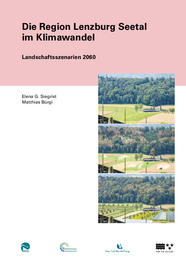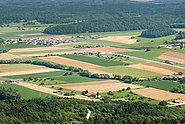
Management and Participation: Coordination of Spatial Development ¶
Land use and landscape development are influenced by numerous stakeholders. We ask what political stakeholders do, why they do it and what effect it has. In this way, we can better understand what causes changes in land use and what effect spatial planning can have.
Contents ¶
Society, administration, government and economics affect the landscape at the local, regional and national levels. We explore their conscious and unconscious spatial decision processes. We also study the characteristics, functions and enforcement issues of various policies and control mechanisms (governance and policy research). Our aim is to decipher who and what triggers changes in land use, how land use is managed and how its management can be improved.
The driving forces for change ¶
Regions designated as periurban are not quite conurbations, but neither can they properly be called countryside; they form a mosaic of agricultural land, settlements and forest. They are among the focal points of our research. In particular, we explore the interactions between stakeholders, planning tools and driving forces for these areas. We investigate the ways in which spatial and landscape planning controls the development and expansion of settlements, which other factors significantly influence settlement growth and how land use conflicts can be resolved. However, agricultural and forestry policies are also crucial for spatial development. In this context, subsidies or contractual agreements with conditions regarding the protection of nature and the landscape are also required in addition to the design, control and implementation of planning tools. We are particularly interested in how the success of such measures can be tested.
Participative management ¶
The participation (involvement) of the general public in the planning and development of the landscape is gaining in importance. One example of how participatory procedures are used is for the development of local landscape planning concepts, such as for the renaturation of waterways, recreation in the forest or general local or regional spatial planning. We critically examine the ways in which they actually bring a benefit and which types of participatory methods are effective. We also analyse the interfaces between science, politics and administration in order to further the development of participatory management.
Fiscal incentives and market-based instruments ¶
Numerous taxes and subsidies provide incentives for land use and urban sprawl in Switzerland. This is rarely questioned, and necessary adjustments are rarely made. We investigate ways in which fiscal disincentives could be reduced.
One way of influencing land use is through innovative policy instruments based on market principles, such as land use certificates. The idea behind this, similar to that of CO2 certificates, is to limit usage rights and build up trade with respect to these rights. A legal right to build up the land can thus be transferred from areas with little demand to those with high demand. We explore the ways in which such trade mechanisms must be designed in order to provide beneficial monetary incentives.




